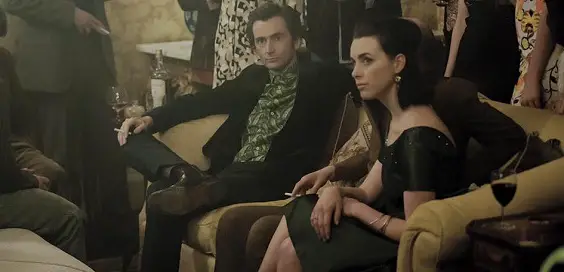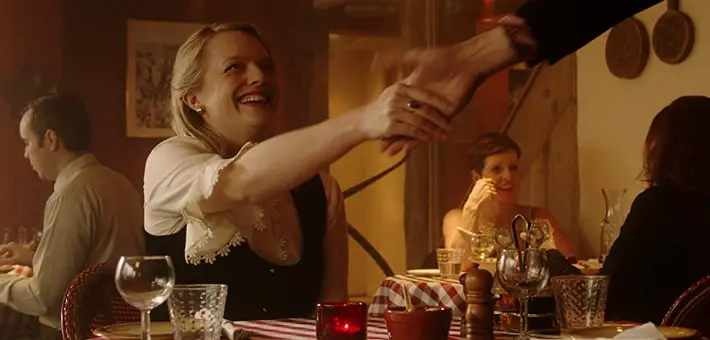Mad to be Normal (2017) – Film Review

Director: Robert Mullan
Cast: David Tennant, Elisabeth Moss, Gabriel Byrne
Certificate: 15
By Roger Crow
It’s a curious experience watching David Tennant’s new movie after more than a year of waiting. In February 2016 I’d visited the Mad to be Normal set in Bubwih and chatted with some of the supporting cast. Seeing how they slot into the story of RD Laing, the controversial Scots 1960s doctor who treated troubled patients at Kingsley Hall, London, is a bit of a jigsaw puzzle. As is the set I’d wandered around, surveying the props like Laing’s book The Divided Self and a period typewriter.
Not that it detracts from the experience. Quite the opposite; it enhances my viewing. Writer/director Robert Mullan packs a lot into his biopic, condensing Laing’s romance of Angie Wood (Mad Men’s Elisabeth Moss), their troubled relationship and the birth of their child, delivered by Laing.
Michael Gambon and Gabriel Byrne add heft to the story as seasoned patients, while Tennant is as brilliant as Laing. His elongated speech patterns help set him aside from any other role he’s played. There’s little of the mix of light and shade he brought to another famous Doctor. Here it’s mostly shades of grey filtered through a sepia-tinged haze of cigarette smoke. There’s so much smoking in this movie, it almost seeps through the screen.
While Tennant, Moss, Byrne and Gambon will get the lion’s share of publicity, it’s the supporting cast I gravitate to most. Adam Paul Harvey is superb as Laing’s right hand man who keeps Kingsley Hall together while his colleague is away acting like a rock star. Jerome Holder, Lucie Glynn and James Utechin are also superb as a few of the patients.
“Not a feelgood film”
Mad to be Normal is not so much a finished film as one that’s abandoned at the end of a scene. A title card gives us some exposition as closure, but it feels like there should have been more. I like the fact that Mullan lets his film breathe. Locking off the camera for long takes, we get to share time with the characters. The strongest scene is Laing treating an American patient in a padded cell. It’s then we get a taste of his working methods, opting for tactile, mirroring behaviour instead of dosing up the patient so they’re in a state of catatonia.
It’s a low budget movie, so we don’t get a lot of establishing shots which eat cash, instead spending most of the movie inside the walls of Kingsley Hall. I’m guessing a chunk of change went on the cast and the rights to the great soundtrack; money well spent.
It’s not a feelgood film, but then again it was never meant to be. Spending time with Laing, his loved ones, colleagues and patients is an intriguing watch. It’s occasionally amusing, chilling, interesting and thought provoking.
A big studio production would have demanded more closure, but that’s the beauty of indie movies. Some of my favourites, like Mike Leigh’s masterpiece Naked, end mid-scene. This is not the sort of film with a happy ever after finale, just as Laing was not the sort of Doctor to provide a quick fix solution.
It’s a thought-provoking piece with an A-list cast and some great rising stars. Well worth a look.










